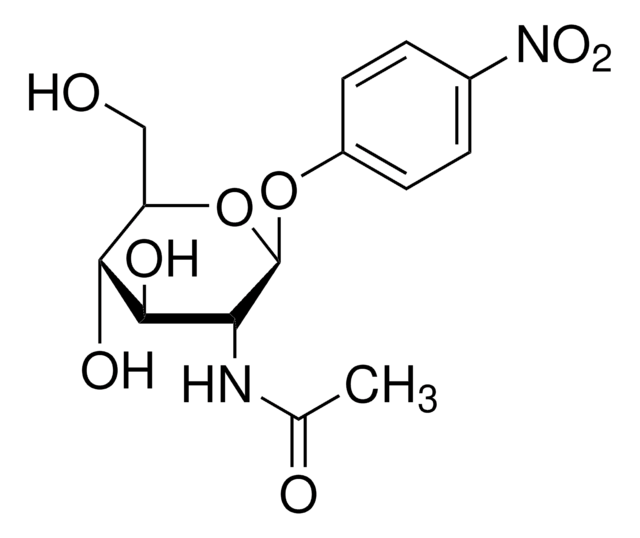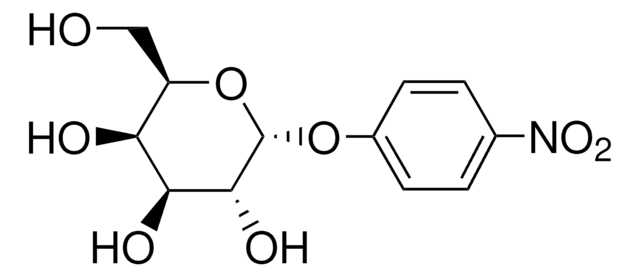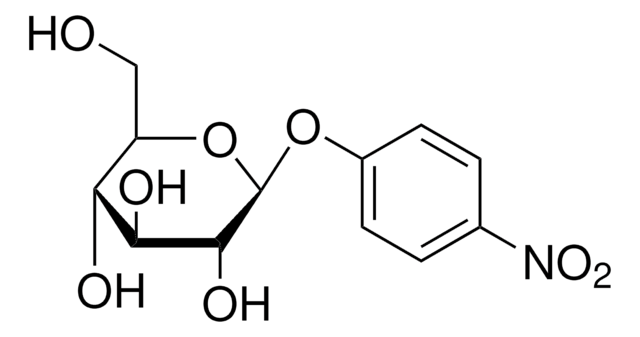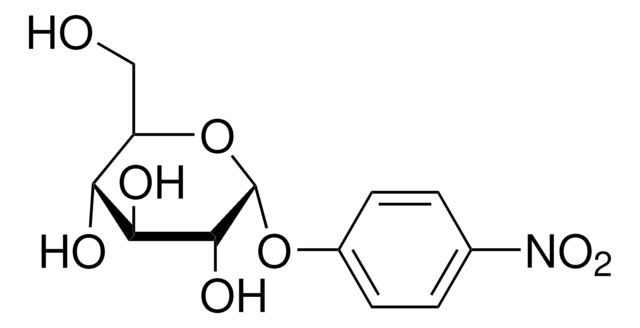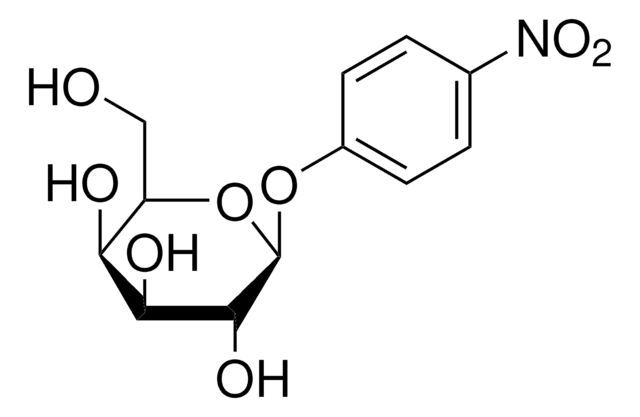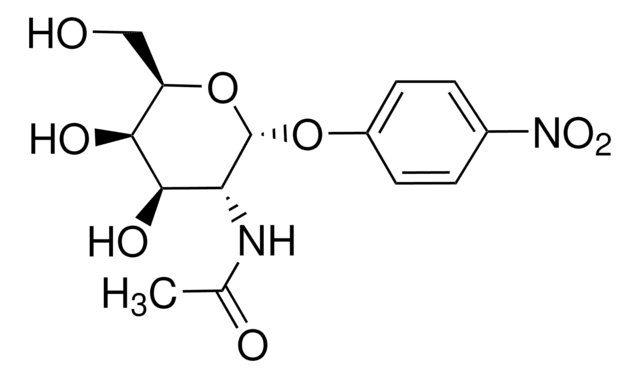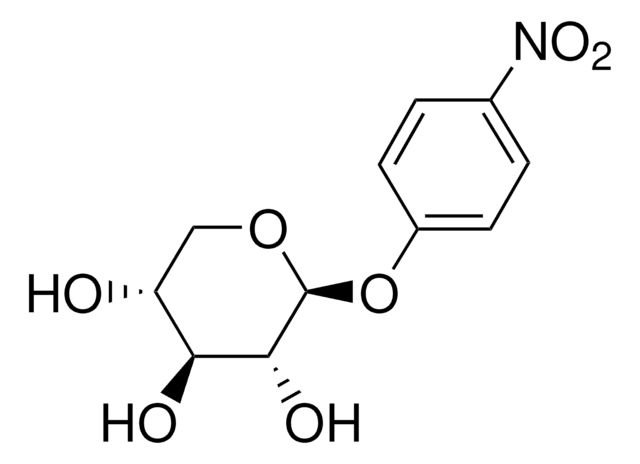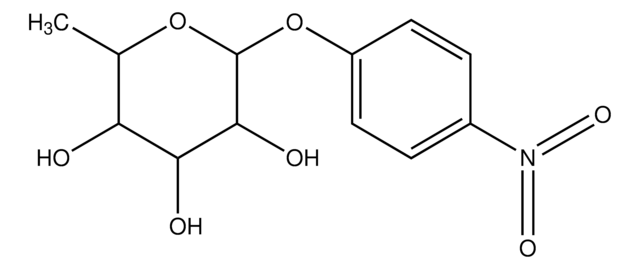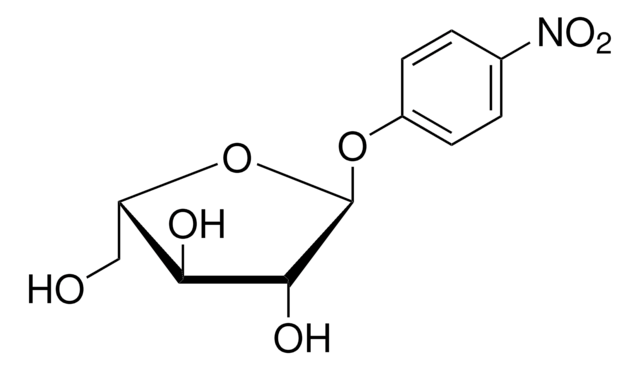Kluczowe dokumenty
N3628
4-Nitrophenyl α-L-fucopyranoside
≥98% (TLC), powder
Synonim(y):
4-Nitrofenylo alfa-L-fukopiranozyd
About This Item
Polecane produkty
Nazwa produktu
4-Nitrophenyl α-L-fucopyranoside, ≥98% (TLC)
Poziom jakości
Próba
≥98% (TLC)
Formularz
powder
rozpuszczalność
acetone: 4 mg/mL, clear, colorless
temp. przechowywania
−20°C
ciąg SMILES
C[C@@H]1O[C@@H](OCc2ccc(cc2)[N+]([O-])=O)[C@@H](O)[C@H](O)[C@@H]1O
InChI
1S/C13H17NO7/c1-7-10(15)11(16)12(17)13(21-7)20-6-8-2-4-9(5-3-8)14(18)19/h2-5,7,10-13,15-17H,6H2,1H3/t7-,10+,11+,12-,13+/m0/s1
Klucz InChI
DCCILTHSDFBSCK-RCGNDRPLSA-N
Szukasz podobnych produktów? Odwiedź Przewodnik dotyczący porównywania produktów
Zastosowanie
Działania biochem./fizjol.
Kod klasy składowania
11 - Combustible Solids
Klasa zagrożenia wodnego (WGK)
WGK 3
Temperatura zapłonu (°F)
Not applicable
Temperatura zapłonu (°C)
Not applicable
Środki ochrony indywidualnej
Eyeshields, Gloves, type N95 (US)
Wybierz jedną z najnowszych wersji:
Masz już ten produkt?
Dokumenty związane z niedawno zakupionymi produktami zostały zamieszczone w Bibliotece dokumentów.
Klienci oglądali również te produkty
Nasz zespół naukowców ma doświadczenie we wszystkich obszarach badań, w tym w naukach przyrodniczych, materiałoznawstwie, syntezie chemicznej, chromatografii, analityce i wielu innych dziedzinach.
Skontaktuj się z zespołem ds. pomocy technicznej